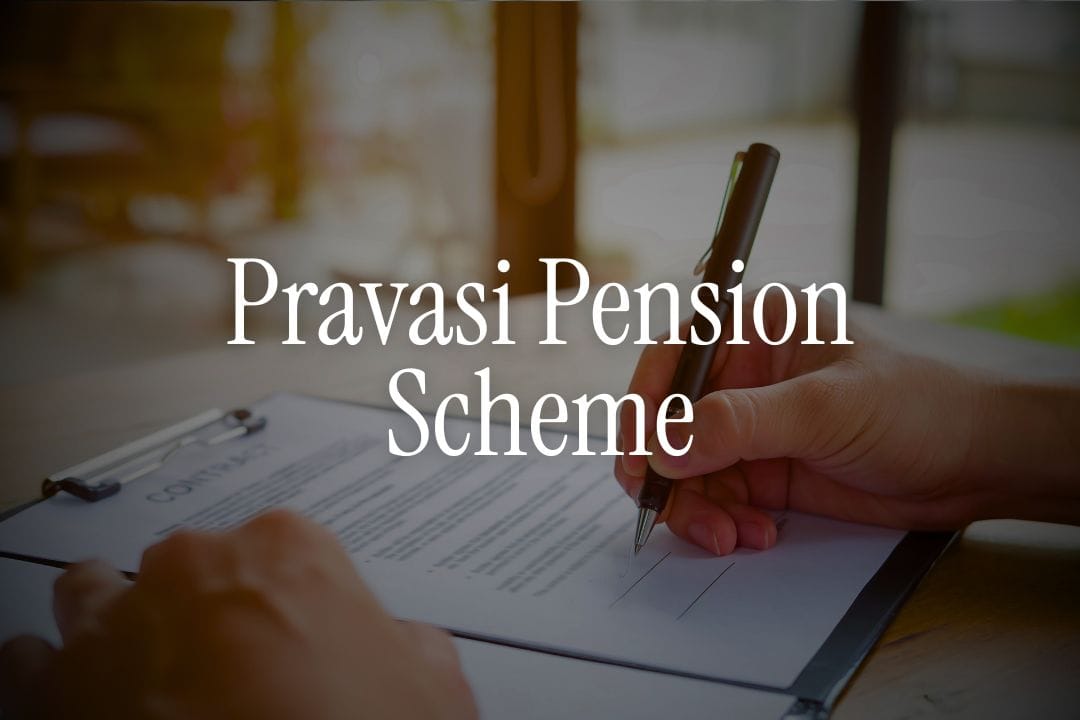
Ravi had been working in Dubai for fifteen years, sending money home to Kerala every month. His engineering job paid well, but one question kept him awake at night: "What happens when I'm too old to work?"
Unlike his friends in corporate jobs with provident funds and pensions, Ravi worked in the unorganized sector. No employee benefits. No retirement fund. Just daily wages that stopped the moment he stopped working.
That changed in April 2018, when Kerala launched something unprecedented - the first state-level pension scheme designed specifically for workers like Ravi. The Pravasi Pension Scheme.
Today, Ravi contributes ₹300 monthly and sleeps peacefully, knowing he'll receive ₹2,000 every month after turning 60. Most NRIs don't know that:: there are actually two major pension options available, and choosing the wrong one could cost you lakhs in retirement income.
Meet Ravi: From Uncertainty to Security
Ravi's story represents millions of Non-Resident Keralites (NRKs) working in the Gulf, Southeast Asia, and other parts of India. They left home young, worked hard in foreign countries, but had no safety net for their golden years.
The Kerala government recognized this gap. With over 2.1 million Keralites working abroad, contributing₹2 lakh crore annually to the state's economy, something had to be done for their post-retirement security.
The Pravasi Pension Scheme is a revolutionary welfare program that treats overseas workers with the same dignity as government employees.
Ravi's story reveals a crucial choice every NRI faces: state-specific schemes versus national options.
What the Pravasi Pension Scheme Actually Means
The Pravasi Pension Scheme isn't just a savings plan - it's Kerala's commitment to its diaspora. Launched by Chief Minister Pinarayi Vijayan in April 2018, this scheme operates under the Kerala Pravasi Welfare Board and is governed by the Kerala Non-Resident Welfare Act, 2008.
The Basic Promise: Contribute regularly during your working years, receive a guaranteed monthly pension from age 60.
The scheme recognizes a simple truth: most Keralites working abroad are in unorganized sectors - construction, domestic work, small businesses - where traditional employer benefits don't exist.
How It Really Works
Core Benefits
Guaranteed Monthly Pension:₹3,500 minimum monthly pension for NRKs abroad (Category 1A), ₹3,000 for returned or those within India (Categories 1B and 2A) starting at age 60
Progressive Increases: Additional 3% of base pension ((₹105 for ₹3,500 base or ₹90 for ₹3,000 base)) for every year beyond 5 years of contribution, not exceeding twice the minimum pension.
Source:Benefits (Welfare Schemes)
Low Entry Barrier: Minimum ₹350 monthly contribution for NRKs abroad, ₹200 for those within India
Source: Membership (Welfare Schemes)
Flexible Membership: Available to both current NRKs and those who've returned after working abroad for at least 2 years
Real-World Example
Let's see how this works for someone like Ravi:
- Age when starting: 35 years
- Monthly contribution: ₹350
- Contribution period: 25 years (until age 60)
- Total contributions: ₹90,000
- Total contributions: ₹1,05,000; Monthly pension at 60: ₹3,500 + (20 years × ₹105) = ₹5,600
- Annual pension: ₹67,200; Break-even period: 1.6 years
- Break-even period: 2.3 years
👉 Tip: Start early to maximize the 3% annual increment. A 25-year contributor receives 60% more pension than a 5-year contributor.
Pros for Gulf-Based NRIs
Financial Advantages
Currency Protection: Contributions in Indian rupees protect against currency fluctuations
Low Cost, High Impact: ₹300 monthly (less than AED 15) secures lifetime income
Tax Benefits: Contributions may qualify for tax benefits under relevant Income Tax sections
Family Coverage: Spouse and dependents eligible for family pension schemes
Practical Benefits
Simple Process: Online registration through Kerala Pravasi Welfare Board
Global Access: Manage account from anywhere through digital platforms
Return-Friendly: Continued benefits even after returning to Kerala permanently
Community Support: Part of broader welfare ecosystem including medical aid, educational assistance, and death benefits
Also Read - Difference Between NRI and Resident Tax Filing in India
Risks and Limitations
Geographic Restrictions
Kerala-Only Focus: Only available to natives of Kerala
Limited Portability: Primarily designed for those planning to retire in Kerala
State Dependency: Benefits depend on Kerala government's financial health
Financial Considerations
Inflation Risk: Fixed ₹3,500/₹3,000 base pension may lose purchasing power over 20-30 years
Opportunity Cost: ₹350 monthly invested in mutual funds could potentially yield higher returns
Cancellation Risk: Missing contributions for one full year cancels membership
No Premature Exit: Unlike NRI fixed deposits, no early withdrawal option
👉 Tip: Consider this as part of your retirement portfolio, not the only retirement plan.
Also Read - Best Mutual Funds for NRIs to Invest in India
The National Alternative: NPS for NRIs
While Kerala's Pravasi Pension Scheme serves NRKs, all NRIs have access to the National Pension System (NPS) - a government-backed retirement scheme with different benefits.
NPS vs Pravasi Pension Comparison
Feature | Pravasi Pension | National Pension System |
|---|---|---|
Eligibility | Kerala natives only | All Indian citizens (including NRIs and Overseas Citizens of India (OCIs)) |
Minimum Age | 18 years | 18 years |
Maximum Age | 60 years | 70 years |
Monthly Contribution | ₹350 (abroad), ₹200 (returned/India outside Kerala) ) | Minimum contribution to open Tier I: ₹500; Minimum annual contribution: ₹1,000 (for NPS) |
Annual Minimum | ₹3,600 | ₹1,000 |
Guaranteed Returns | Yes (₹3,500/₹3,000 + increments ) | No (market-linked) |
Tax Benefits | Limited | Up to ₹1.5 lakh under Section 80CCD(1) (part of 80C) + additional ₹50,000 under Section 80CCD(1B) |
Withdrawal at 60 | 100% as pension | 60% lump sum + 40% annuity |
Investment Options | Fixed by government | Choice of equity, debt, government securities |
(Source: NPRDA)
Which Should You Choose?
Choose Pravasi Pension if:
- You're from Kerala and plan to retire there
- You prefer guaranteed returns over market risk
- You want simple, hassle-free retirement planning
- Your income is irregular or modest
Choose NPS if:
- You're from any Indian state
- You can invest ₹1 lakh+ annually for better tax benefits
- You're comfortable with market-linked returns
- You want flexibility in investment allocation
Many NRIs actually choose both - NPS for tax benefits and higher potential returns, Pravasi Pension for guaranteed baseline income.
Step-by-Step Application Process
For Pravasi Pension Scheme
Step 1: Determine Your Category
- 1A: Currently working abroad
- 1B: Returned to Kerala after 2+ years abroad
- 2A: Working outside Kerala but within India
Step 2: Gather Documents
- Valid passport with current visa
- Kerala address proof or birth certificate
- NRE/NRO bank account statement
- Recent passport-size photographs
- Employment certificate from current employer
Step 3: Online Registration
- Visit pravasikerala.org
- Select appropriate form (1A, 1B, or 2A)
- Fill personal and employment details
- Upload required documents
- Pay ₹200 registration fee
- Submit application
Step 4: First Contribution
- Set up monthly auto-debit from your Indian bank account
- Ensure consistent payments to avoid membership cancellation
For National Pension System
Step 1: Choose Account Type
- Decide between repatriable (NRE) or non-repatriable (NRO) contributions
- Select Tier-I (mandatory pension) and/or Tier-II (additional savings)
Step 2: Online Application
- Visit eNPS portal
- Select "Non-Resident of India" status
- Enter PAN, passport, and bank details
- Choose between Active Choice (self-managed) or Auto Choice (age-based allocation)
- Complete KYC verification
Step 3: Investment Strategy
- Conservative (Age 45+): 70% Government Securities, 20% Corporate Bonds, 10% Equity
- Moderate (Age 35-45): 50% Government Securities, 25% Corporate Bonds, 25% Equity
- Aggressive (Age 25-35): 30% Government Securities, 20% Corporate Bonds, 50% Equity
👉 Tip: You can change your investment allocation up to 4 times per year in NPS.
Tax Implications and Benefits
For Pravasi Pension Scheme
Contribution Phase:
- Contributions may qualify for tax deductions under relevant sections
- Consult your tax advisor for specific DTAA benefits
Pension Phase:
- Monthly pension likely taxable in India as "Income from Other Sources"
- Residential status determines tax liability
For National Pension System
Contribution Phase:
- Up to ₹1.5 lakh deduction under Section 80C
- Additional ₹50,000 deduction under Section 80CCD(1B)
- Total potential tax savings: ₹2 lakh annually
Withdrawal Phase:
- 60% lump sum withdrawal is tax-free
- Annuity purchases with remaining 40% are tax-free
- Regular pension income is taxable
Your Next Steps
This Week:
- Assess your retirement needs using our pension calculator
- Determine eligibility for Pravasi Pension (Kerala natives) or NPS (all NRIs)
- Gather required documents for application
Next Month:
- Complete online registration
- Set up auto-debit for regular contributions
- Review and optimize your overall NRI investment strategy
Ongoing:
- Monitor account performance annually
- Adjust NPS allocation based on age and risk appetite
- Consider increasing contributions with salary growth
Don't let Ravi's early years of uncertainty become your story. Whether you choose the guaranteed comfort of Pravasi Pension or the growth potential of NPS, the key is starting today.
Your future self will thank you for every month you contribute. And unlike Ravi's sleepless nights, you'll rest easy knowing your retirement is secure.
Ready to start building your retirement corpus? Download the Belong app and explore other GIFT City investment options that complement your pension planning.
Questions about choosing the right pension strategy? Join our WhatsApp community where fellow NRIs share their retirement planning experiences and get expert guidance.
Sources: Kerala Pravasi Welfare Board Official Website | National Pension System Trust | PFRDA Guidelines for NRI | Kerala Non-Resident Welfare Act, 2008 | SBNRI Research on Pravasi Pension Benefits




